Plant Selection: Create Stunning Visual Impact
Last updated 3/8/2022 at 6:22pm
Plant choice is one of many important steps in creating a new garden design or outdoor living area
transformation. Choosing the right plants for your garden space depends on a several different factors, such as knowing the exact amount of space to fill with plants and understanding your garden's characteristics. Determining the soil type and deciding on the look you want to create. Naturally, there are numerous exciting elements to consider while determining your planting plan. Do you want to add colorful, blooming plants to brighten a patio or porch? Are vibrant and colorful plants needed to provide pops of color in a shady area? Would you like to hide or diminish the impact of an existing structure?
Then consider the following steps an aide, to guide you, before making plant selections.
1. AREA MEASUREMENT
Plants require space to grow and thrive and without it they are not going to perform well. Be realistic
with your garden plant ideas. Start by gathering a tape measure, ruler, sheet of paper and a pencil, to capture the measurement information. On the sheet of paper, roughly sketch the planting area
dimension. Follow this by using a tape measure to determine the areas' length and width. Write the
measurements on to corresponding areas of your sketch. Follow the same process for creating a
container gardening plan by drawing a sketch of the area where you'd like to place containers within the measured area. This will allow you to see how containers fill-up the space. This first step is the most important step, and planting decisions can now be based upon actual measurements, without attempting to guess the amount of area. Once you understand the area available for planting, you will have a better idea of what can be achieved in your planting scheme using flower beds, shrubs, trees, and borders.
2. SOIL TYPE
Okay, let's face it and talk about the elephant in the room! Southeast Texas does not have the greatest soil type, since most of us have clay soil but this doesn't have to be a limiting factor when planning a new planting area. Many plants like to grow in our soil which has a pH range between 5.5 and 7.0. For maximum nutrient availability, plants need to be grown in pH range of 6.0 to 7.0. Soil with a pH value 7.0 is neutral, below 7.0 is acidic and above 7.0 is alkaline. The best way to determine the type of soil and its pH is by way of soil analysis. Gather a few soil samples for analysis and provide them the nearest county extension office who will provide guidance on where to submit samples for analysis.
The cost of soil analysis is minimal, usually less than $20 with results arriving by email in about 7-10
days. The results include a detailed elemental and mineral analysis, soil structure and pH. Further, the analysis will provide soil amendment recommendation for the type. Just as important as pH are soil texture and structure since the level of nutrients and drainage is specific to all types of plants. There are six main soil types and while most of us have clay soil, the possibility of having small areas or pockets of these soil types interspersed with clay exists. The types of soil are:
• Clay: clumps together, has poor drainage but good nutrient content, good for many evergreen
plants, many shrubs, and a few vegetables.
• Sandy: loose, does not hold together well when squeezed, dries out quickly and has minimal
nutrient content.
• Silty: soft, easily compacted, easily improved using numerous types of organic matter.
• Peaty: spongy, dark in color, great for some vegetables, azaleas, and blueberries.
• Chalky: numerous rocks and pebbles, can be good for trees, shrubs, and many bulbs.
• Loamy: an amalgamation of all soil types, excellent structure and texture, has the ability to hold
moisture, the best type of soil for gardening.
3. SHADE CHARATERISTICS
There are varying degrees of shade, such as partial or light-dappled shade beneath a weeping willow tree or heavy-dense shade, which would be provided by a large structure, house, or tree with a dense canopy (think Live Oak), with numerous levels of shade in between. Many of the best plants for shade will do well in light or partial shade and are more common garden plants than you might think, such as hydrangea, viburnum, and several rose varieties. Plants needed for dense, heavy, or full shade can be more challenging, and most will not have colorful blooms and often not as visually exciting. They should still be worked into your gardens design though; Hosta, bleeding heart, vinca, and ferns are a few plants to consider – they can provide a "green background" which will enhance the visual appeal of vibrant, blooming plants by contrast. Plants can take longer to establish themselves in shady areas, since these areas will have minimal moisture if covered by large trees. Large trees consume lots of water and nutrients, so patience is needed while allowing shade loving plants to establish themselves.
4. SUN CHARACTERISTICS AND "HOT ZONES"
Just as important as knowing the type and amount of shade within your garden area, is knowing the
number of hours direct sun received, including where the "hot zones" are located. Hot zones are planting areas which receive full sun from morning, throughout the entire day until evening, without any type of shade during the day (8 to 12 hours). If your garden benefits from full sun, plant choices are many. In Southeast Texas (Zone 9a), summers are long and often very hot, with temperatures well above 90℉ for many months. Make certain your plant selections can take the heat, especially in hot zones. These areas will require plants which can endure the heat yet flourish despite it. Once established, drought tolerant plants like Lantana (Lantana urticiodes), Black-eyed Susan (Rudbeckia fulgida 'Goldsturm'), Purple coneflower (Echinacea purpurea), Salvia (Salvia greggii), Gulf-coast muhly grass (Muhlenbergia capillaris), Chaste tree (Vitex agnuscastus), Plumbago (plumbago auriculata), Firebush (Hamelia patens), Esperanza (Tecoma stans), to name a few, will thrive. As gardeners, we realize sun-loving plants far outnumber shade-loving plants and typically sun-loving plants have the brightest, most vivid, and colorful blooms.
5. "UNINVITED GUESTS" -VS- FLORA AND FAUNA
Okay, I'm certain most gardeners know about snails and slugs which are annoying, uninvited guests.
You will want to think about animals, wild or domesticated which are likely to dig up, lay on top of or
chew plants, like rabbits, raccoons, squirrels, chipmunks, mice, dogs and cats, your own pets, or your neighbors! You don't want them making your garden a part of their stomping ground, so you want to ensure that you can both protect your plantings while keeping all other unwanted "guests" away. Know some plant varieties are poisonous to dogs and cats, such as oleander, sago palms, lily-of-the-valley, lilies, and tulips. While beautiful, you might want to edit these from your garden planting ideas.
Encourage pollinators like birds, insects, bees, and butterflies, as they all are a gardens' best friend! By incorporating bird feeders, baths and nesting boxes, toad houses, or butterfly houses into your plan, it creates an inviting habitat for pollinators,
6. PLANTING ENMASSE
For more colorful and visually dramatic impact, plant in groups of three or five or more. By planting
odd-numbered multiples of plants, you create an island of color, guaranteed to draw smiles from
neighbors and passers-by. Utilize plants of varying heights, bloom or foliage color, and texture to
increase the aesthetic. Maximize mass plantings visual appeal with separation, creating borders and
boundaries between plantings. Create a unique space by incorporating garden art that you find appealing made of metal, stone, or wood. Utilize large planters in vibrant, bold colors as statement pieces, add water features with basins to attract birds and bees. Include obelisks, or elevate uncommon elements, repurpose broken objects such as terra cotta planters. Don't be afraid to fill gaps in beds with plants, flowers, and objects – the most beautiful flower bed ideas, borders and pots are teaming with color and plants of multiple heights and varying structure. This is the time to experiment and create the exact look you want, so have fun and enjoy the process of creating your new planting area!
7. SPECTACULAR AND LOW MAINTENANCE
You really can have it all in your garden area! But wait, for this to occur you will need to determine the amount of time you have available to maintain the planting area, since it required considerable time, energy, and money to create it. Time must be dedicated to the planting area to maintain it, and to keep it looking its best. Understanding your time constraints, and availability for maintenance is a critically important aspect in determining plant selection. Luckily, the availability of low maintenance plants is astounding. Most trees, shrubs, and grasses require little to no maintenance. Each can provide height, and structure, while increasing "curb appeal". Utilize topiaries as another way to reduce garden maintenance, as many only require a light trim annually. There are plenty alternatives to add interest, and focal points while creating dramatic statements to form a cohesive framework with your planting design. And finally remember this, if you choose native or drought tolerant plants, during the dog days of summer, you can forget to water or choose not too, as the plants won't mind!
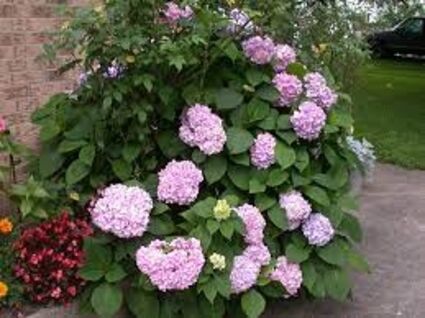
Image courtesy aggie-horticulture.tamu.edu
Hydrangea
Don't forget Orange County Master Gardeners' annual Bloomin' Crazy plant sale is Saturday, March 12 between 8 AM – 1 PM at Cormier Park, 8235 FM 1442 in Orangefield, located between the railroad tracks and St. Helens' Catholic Church. We have a huge variety of plants for Southeast Texas with many Texas Superstars, numerous varieties of bedding and flowering plants, vegetables and herbs, shrubs, and trees including citrus, berries, figs, and avocados.
For more information or to have all your gardening questions answered, contact the Orange County
Master Gardeners: Website: https://txmg.org/orange Facebook: Orange County Texas Master
Gardeners Association Helpline: (409) 882-7010 Email: [email protected].

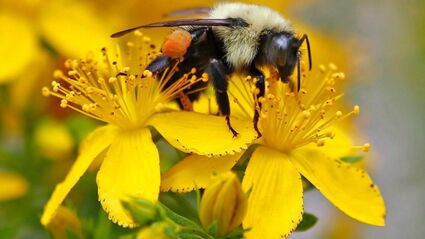

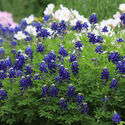
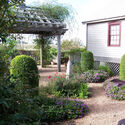
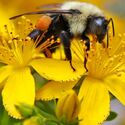
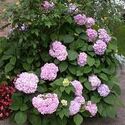













Reader Comments(0)